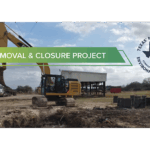
When it comes to evaluating potential environmental risks associated with a property in Midwest City, Phase 1 Environmental Site Assessments (ESAs) play a crucial role. These assessments are an essential part of due diligence for property transactions, providing valuable information to both buyers and lenders. In this article, we will delve into the details of Midwest City Phase 1 ESAs, discussing their purpose, key components, process, regulatory framework, interpretation of results, as well as the challenges and solutions in conducting such assessments.
Understanding Phase 1 Environmental Site Assessments
Phase 1 ESAs serve as a preliminary investigation to identify potential environmental liabilities and risks associated with a property. The assessments aim to provide a comprehensive overview of the site’s historical and current environmental conditions. By conducting Phase 1 ESAs, property buyers can make informed decisions and lenders can gauge the potential financial and legal risks associated with the property.
Purpose and Importance of Phase 1 Assessments
The primary purpose of Phase 1 Assessments is to evaluate and document the environmental “recognized environmental conditions” (RECs) associated with a property. RECs are the presence or likely presence of hazardous substances or petroleum products due to past or present activities. Identifying RECs is crucial to assess potential liability and determine further investigation or remediation requirements.
Moreover, Phase 1 Assessments play a vital role in promoting sustainable development practices and environmental stewardship in Midwest City. By conducting these assessments, the community demonstrates its commitment to responsible growth and ensures the protection of public health and the environment.
Key Components of Phase 1 Assessments
A Phase 1 Assessment consists of several key components that provide a comprehensive understanding of a property’s environmental history and potential risks:
- Site reconnaissance and inspection to assess the current condition of the property.
- Review of historical records, including aerial photographs, past land use, and environmental databases.
- Evaluation of surrounding properties to identify potential sources of contamination or migration pathways.
- Interviews with current and past property owners, occupants, and knowledgeable individuals about the site’s history and usage.
- Analysis of available regulatory records and permits related to the property.
During the site reconnaissance and inspection phase, environmental professionals meticulously examine the property, paying close attention to any signs of contamination or potential risks. They assess the condition of buildings, infrastructure, and surrounding areas to identify any visible indicators of environmental concerns.
Furthermore, the review of historical records is a crucial step in Phase 1 Assessments. Environmental consultants delve into archives, scouring through aerial photographs and land use records to gain insights into the property’s past activities. This meticulous investigation helps uncover any potential sources of contamination that may have occurred in the past.
Additionally, the evaluation of surrounding properties plays a significant role in understanding the potential risks associated with a property. Environmental professionals analyze neighboring sites to identify any potential sources of contamination that may pose a threat to the property in question. This comprehensive approach ensures that all potential risks are thoroughly assessed and addressed.
Interviews with current and past property owners, occupants, and knowledgeable individuals provide valuable information about the property’s history and usage. These interviews help environmental consultants gain insights into any past activities that may have contributed to the presence of hazardous substances or petroleum products on the property.
Lastly, the analysis of available regulatory records and permits related to the property allows environmental professionals to understand the property’s compliance with environmental regulations. This step helps identify any potential violations or areas of concern that may require further investigation or remediation.
By incorporating these key components into Phase 1 Assessments, environmental consultants provide a comprehensive evaluation of a property’s environmental conditions. This thorough approach ensures that property buyers and lenders have the necessary information to make informed decisions while safeguarding the well-being of the community and the environment.
The Process of Conducting Phase 1 Assessments in Midwest City
Conducting Phase 1 Assessments in Midwest City involves a systematic approach to gather information and assess potential environmental risks. Let’s explore the key steps involved:
Initial Site Inspection
The assessment begins with a thorough site inspection to gather firsthand information about the property. Environmental professionals conduct a visual examination, noting any potential signs of contamination, storage tanks, or other indicators of environmental risks.
Historical Review of the Site
A comprehensive historical review is a crucial step in Phase 1 Assessments. Environmental consultants analyze various records, including maps, photographs, permits, and regulatory files, to gain insights into the property’s past uses and potential sources of contamination.
Evaluation of Surrounding Properties
In order to assess potential risks accurately, the assessment process includes evaluating adjacent and nearby properties. This evaluation helps identify contaminants that could migrate to the assessed property and provides a comprehensive understanding of the surrounding environmental conditions.
Regulatory Framework for Environmental Site Assessments
Compliance with federal, state, and local regulations is integral to conducting Phase 1 Assessments in Midwest City. Let’s explore the regulatory framework that guides these assessments:
Federal Regulations and Guidelines
The Environmental Protection Agency (EPA) provides guidelines for conducting Phase 1 Assessments across the United States. These guidelines, commonly known as the All Appropriate Inquiries (AAI) rule, establish the minimum requirements and standards that environmental professionals must follow to meet the federal criteria.
State and Local Regulations in Midwest City
In addition to federal regulations, Midwest City may have specific requirements for Phase 1 Assessments. It is crucial to consult local regulatory authorities and stay up-to-date with any additional guidelines or regulations that need to be adhered to during the assessment process.
Interpreting Phase 1 Assessment Results
Once the Phase 1 Assessment is complete, the findings need to be carefully analyzed and interpreted to make informed decisions regarding the property. Let’s explore the key aspects of interpreting Phase 1 Assessment results:
Identifying Potential Environmental Risks
The assessment report should identify any RECs associated with the property. Environmental professionals assess the identified risks and their potential impact on future development or use of the site.
Recommendations and Next Steps
Based on the assessment findings, professionals provide recommendations for further investigation or remediation if necessary. These recommendations help guide property buyers and lenders in making informed decisions and ensuring compliance with environmental regulations.
Challenges and Solutions in Phase 1 Environmental Site Assessments
Despite the importance of Phase 1 Assessments, they come with their own set of challenges. Let’s explore some common challenges in conducting these assessments and discover innovative solutions:
Common Challenges in Conducting Assessments
One of the challenges in Phase 1 Assessments is collecting accurate historical information about the property, especially for older sites with limited records. Additionally, accessing certain areas of the property for inspection can pose logistical challenges.
Innovative Solutions and Approaches
To overcome these challenges, environmental professionals employ innovative solutions, such as utilizing advanced remote sensing technologies and employing experienced researchers to dig deep into historical records. Collaborating with local authorities and conducting interviews with knowledgeable individuals also aids in filling information gaps.
Overall, Midwest City Phase 1 Environmental Site Assessments serve as a crucial tool in evaluating potential environmental risks associated with properties. By following the standardized procedures, leveraging regulatory support, and overcoming challenges with innovative solutions, we can ensure responsible development and mitigate environmental liabilities. Conducting Phase 1 Assessments sets a solid foundation for sustainable property transactions and protects the health and well-being of Midwest City residents.
If you’re ready to ensure the environmental integrity of your property in Midwest City, look no further than ESE Partners. Our team of expert environmental engineers and scientists is equipped to handle the complexities of Phase 1 Environmental Site Assessments and beyond. At ESE Partners, we’re committed to responsibly moving business forward through innovative and sustainable solutions. We understand the unique challenges and regulatory obligations of various industries, and we’re here to support you with due diligence, remediation, and compliance services. Let us help you recognize opportunities and improve your community’s quality of life. Request A Proposal today and partner with a team that delivers honest, quality-driven results.








